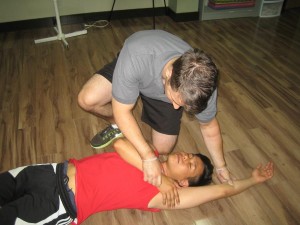Cardiovascular disease

Each year, heart disease is accountable for over 600,000 deaths in the US. In 2010, more than 2000 Americans died each day due to cardiovascular disease (CVD). Risk factor statistics are even worse, with 33 percent of adult men and women older than 20 years old with hypertension. That’s approximately 78 million Americans living with hypertension. While the deaths rates have actually declined by as much as 30 percent between 2000 and 2010, the numbers are still very worrying.
CVDs are still largely caused by an unhealthy style, with victims of cardiac arrest only getting needed medical help when the situation has become severe. Being a trained rescuer means that you have to understand the concepts the surround CVDs and CPR, before you can give adequate care to the victim. Sometimes CPR rescue involves a certain amount of health teaching as well.
What you can study at our providers
- Heartsaver – basic CPR for the public
- Heartsaver C – basic CPR for health care providers (HCPs)
- *Basic Life Support for HCPs
- *Advanced Cardiac Life Support
- *Pediatric Advanced Life Support
All the programs in the list with an asterisk have available re-certification. For other programs, the rescuer has to take them again in order to renew their nearly expired certificate. We do not accept rescuers with expired credentials in our re-certification classes.
Where you can study at
We want to reach a large audience for our CPR training programs so we have training centers in six cities spread out of five states in the US. These centers all have the same programs on offer, for the same rates. The schedules may change depending on where you enroll, but only because we tailor our program schedules to the trainees who apply to them.
- Los Angeles, California
- San Francisco, California
- Honolulu, Hawaii
- Las Vegas, Nevada
- Seattle, Washington
- Portland, Oregon
Enrollment is very easy, with an 24-hour application form available on our provider websites. You may also apply to a program through e-mail, telephone call, or walk-in during operating hours.
